Sharrow MX3 Propeller

Brief Summary
We’ve done several tests on Sharrow Propellers but there was some pushback with them being “specialized” propellers… made for specific applications. For example, one was with props dialed in to an exact boat and engine combination, another was for a specific catamaran, and still another was for a specific tour boat in the Virgin Islands. We were, therefore, requested to do a test on an “average Joe’s” boat. And so, we did.
Mission
This latest Sharrow test is on, what is probably, the most average boat we’ve done. Average size, average weight, average power. It’s the Robalo R302 Center Console. It has a 9,000 lb (4082 kg) empty weight, an 11,220 (5,089 kg) estimated test weight and test power was a pair of Yamaha 300-hp outboards turning standard stainless-steel 15 ¼ by 19 three-bladed props. The Sharrows were standard MX3 15.04 by 19 props... not dialed in, not re-engineered for this boat... just props taken right off the shelf. I watched them come off the shelf.
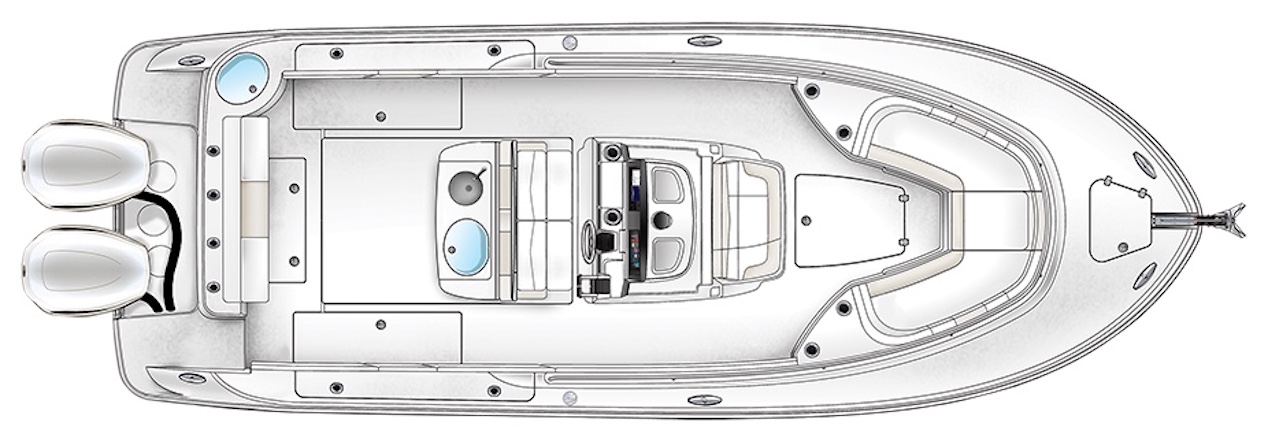
Performance — Original Props
Let’s start right in on the performance figures. With the original props, we reached a top speed of 51.5 MPH. Best cruise came in at 4000 RPM and 32.9 MPH. At that speed, the 22.2 GPH fuel burn translated into 1.5 MPG and a range of 400 statute miles — all while still holding back a 10% reserve of the boat’s 300-gallon (1,135.62 L) total fuel capacity.

After the first runs, we removed the props and inspected them for nicks, dents or any damage at all. Both were found to be free from any defects. Then we brought out the Sharrow MX3 15.04 by 19 props. These are off-the-shelf props and not dialed into this specific boat, but they are made for this type of engine application. We inspected each for the same types of defects and found none. They were installed and off we went on the second set of runs.
Performance — Sharrow Props
With the Sharrow MX3 props the top speed was 51.3 MPH. Best cruise was now at 3000 RPM and 25.7 MPH. At that speed, the 14.6 GPH fuel burn worked out to be 1.77 MPH and that meant a range of 477 SM.

So, with the Sharrow props, the top speed dropped slightly. We really weren’t surprised by this as it’s actually consistent with all of our previous tests. Not some tests… all. These props aren’t about speed, they’re about efficiency and that takes place in the midrange of the performance envelope, conveniently enough, right where most operations take place. Let’s look a little closer at what we mean.
Speed Comparison by RPM

When we compare speeds at varying RPM settings it tells an interesting story. By looking at the graph above, we see just slight improvements at both the low and the high ends of the scale. But in the middle of the graph, there are significant differences.
Starting at 3000 RPM, the Robalo with the Sharrow prop is running at 25.7 MPH… and the boat is solidly on plane. Conversely, with the standard prop, our Robalo was still wallowing along at 13.8 MPH, clearly not on plane, or even close. That’s an 86% improvement in speed.
Now let’s move on up to 3500 RPM. With the standard prop the Robalo is finally on plane at 20.3 MPH, but the Sharrow prop brings her to 32.2 MPH. That’s a 58.6% improvement. Further up the scale, things start coming together with the Sharrow taking the top honors at all but wide-open throttle. But if this were only about speed, the Sharrow props wouldn’t be selling as well as they are. It’s also about fuel efficiency. So, let’s look at the differences with an eye toward MPG.
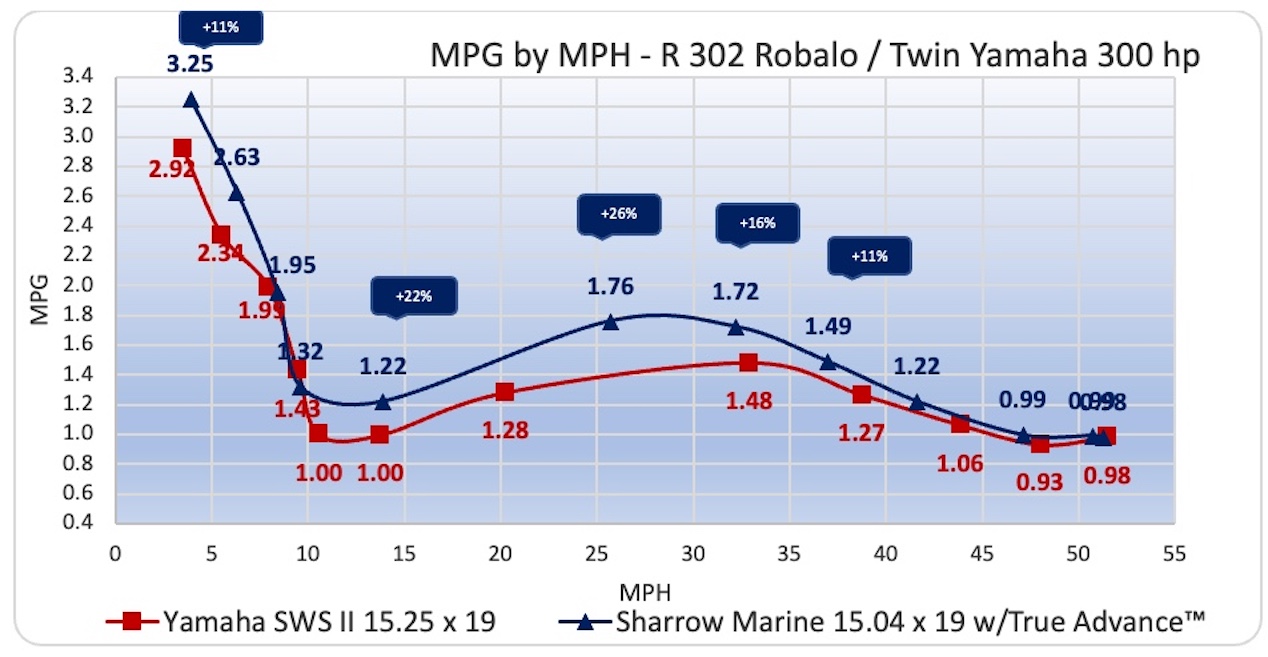
While the low end of the spectrum isn’t where the Sharrow props shine the most, we can now see that even as low as 13.9 MPH there’s a 22% increase in fuel efficiency. And at 25.7 MPH, where the Sharrow was at its peak, there’s a 26% improvement.
That’s also where the Sharrow propeller will start paying for itself in the long run and that’s why they’re selling so well. But none of this answers the question about how these props are able to produce such remarkable fuel efficiency. The answer to that is, by having such an efficient advance rate.
Advance Rate is the Key
If we were to imagine a prop was rotating in a solid medium, then a 15” (38.1 cm) pitch prop would move ahead 15” (38.1 cm) with every rotation. Sounds simple enough, but they don’t spin in a solid, they spin in a liquid. And that liquid will also move away from the prop as the prop moves forward. So there’s a lack of efficiency inherent in the design.
Sharrow propellers capitalize on that shortcoming and are actually more efficient than any standard prop with each rotation. How much more? A lot more.

By considering the advance rate, we can clearly see how the Sharrow props are so much superior to standard props. Take a look at the chart above. Starting at the bottom of the performance envelope and continuing all the way up to, but not including wide-open throttle, the Sharrow propeller advances further with each and every rotation when compared to the standard prop.
At 2500 RPM it’s nearly 2 1/2” (6.35 cm) more or 32% more efficient and at 3000 RPM it’s a full 7.36” (18.69 cm) or 87%. It stays ahead by a wide margin until 4000 rpm where they level off up to wide-open throttle. That, in a nutshell, is how the Sharrow propeller saves so much money... it simply goes further ahead with every rotation.
More Efficiency Equals More Range
By advancing more for every rotation, the Sharrow props are able to provide more range for less money. At 3000 RPM the Sharrow propeller is able to move our Robalo 475 miles vs only 269 miles with the standard prop. That’s an increase of 77% and that is why efficiency is the reason these props are selling out. We’re literally getting .77 MPG improvement at that speed.
At 3500 RPM, we’re jumping from 346 miles to 465, an improvement of 119 miles or a 34% increase in range. And with today’s prices for fuel, who wouldn’t want to go further with each gallon of gas?
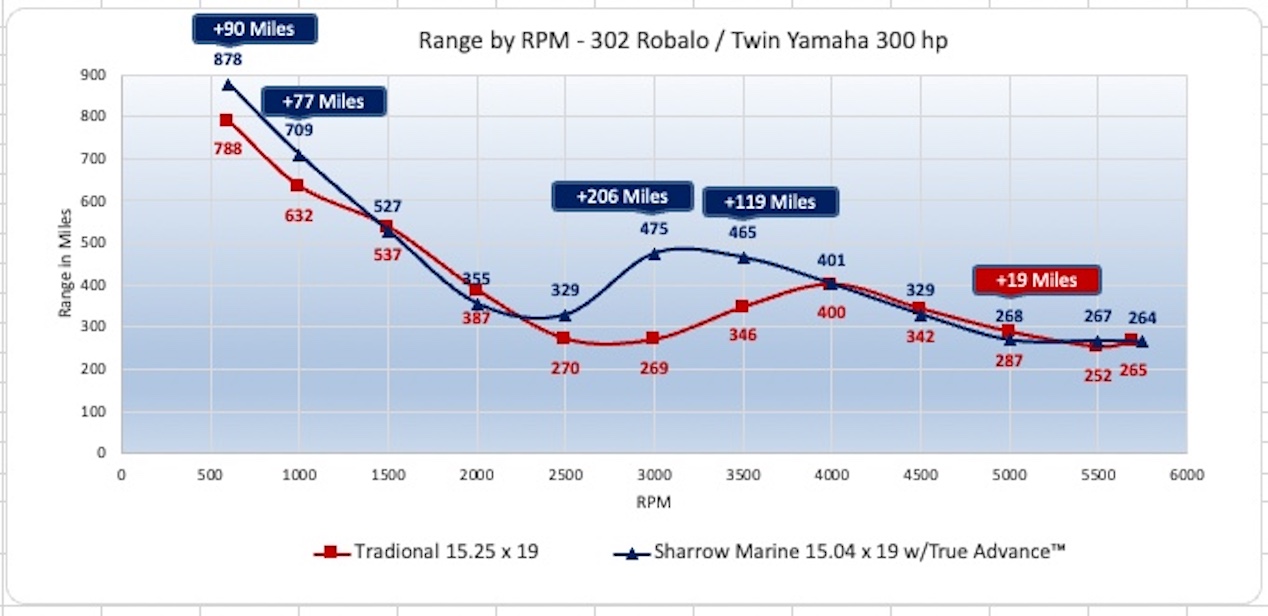
Handling
As if the efficiency isn’t enough, handling is another area where the Sharrow props are an improvement.
Handling with standard props.
When we put the boat in gear, there’s a pronounced rumble underneath the boat. It may not be noticed on every boat but that’s because it comes across as normal. Pay attention and now it’s apparent. Especially when coming away from the dock.
And more so in reverse with all that cavitation, all the bubbles… everything going under the boat. It can easily be felt throughout the whole boat. Plus there was marginal control when in reverse. I would put it into a turn and it would take full opposite turn to stop the swing and then reverse it. There was a long pause and then it would start coming back again and then we turn the wheel back… again long pause… then it would slowly start coming back
When putting her into a turn the speed really drops off. Hold the turn and it drops off to the point where she falls off the turn completely and the stern kicks around.
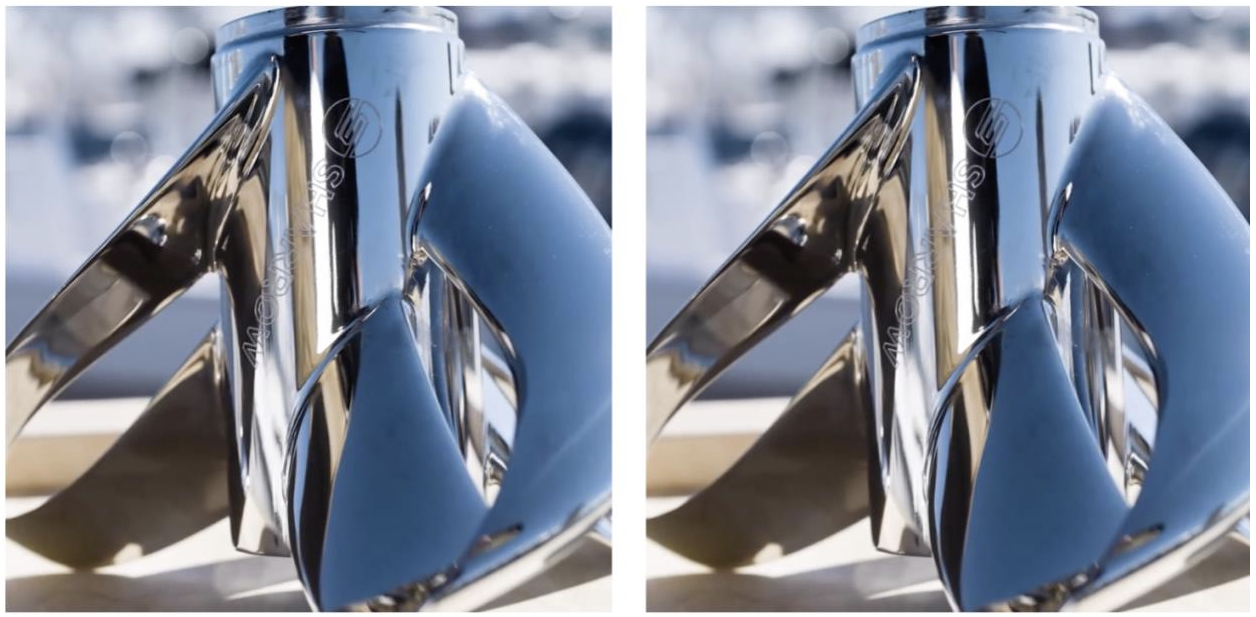
Going straight ahead in cruise, I had to consistently use 3/4 of a turn of the steering wheel to either side just to keep it straight and maintain my heading. Just imagine doing that for three hours. These are all things we consider normal, that’s just how it is.
Handling with Sharrow Props
Once we switched over to the Sharrow props, the differences were quickly apparent. Firstly, when we put the boat in gear. There was no longer any low-speed rumble. The transition was remarkably smooth.
In reverse the controllability was remarkable. Where before, we had minimal control in reverse now it was nearly instantaneous. We even did a full turn to get momentum to try to make it the worst it could be, and then stop that turn. It immediately came back in the opposite direction. The difference was just night and day between the two propellers going in reverse. Plus there was no cavitation… no rumble… no sound going through the whole boat that we had before.
Tracking was the most shocking thing. Where the only props has us using up to ¾ turns on the wheel just to stay straight, here I was taking my hands off the wheel and just letting it run. And this in quartering seas where it should have been the worst. This is where even minimal waves will tend to push the stern off course, but it just wasn’t happening here.
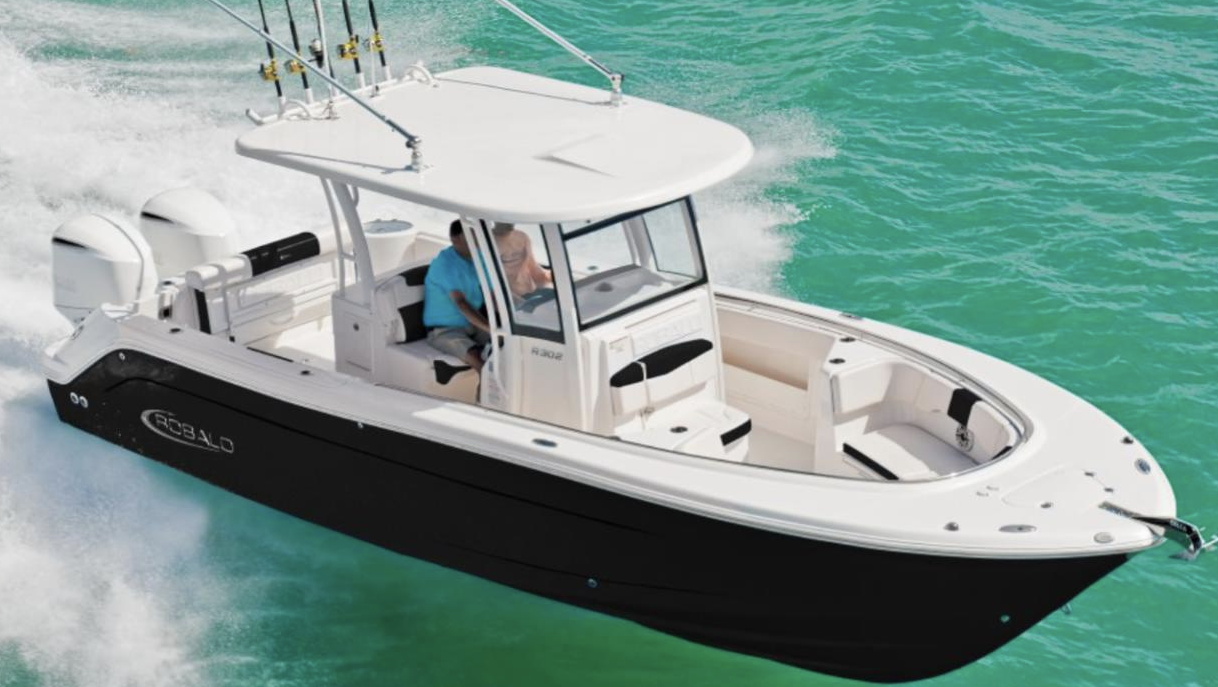
Observations
This test proved yet again how impressive the Sharrow propellers are. But for us, we’ve given up being surprised. It’s just another “we told you so” but in another application. That old saying about how you can’t reinvent the wheel is out the window. Sharrow did it and the result is undeniable. Regardless of where and how it’s applied.